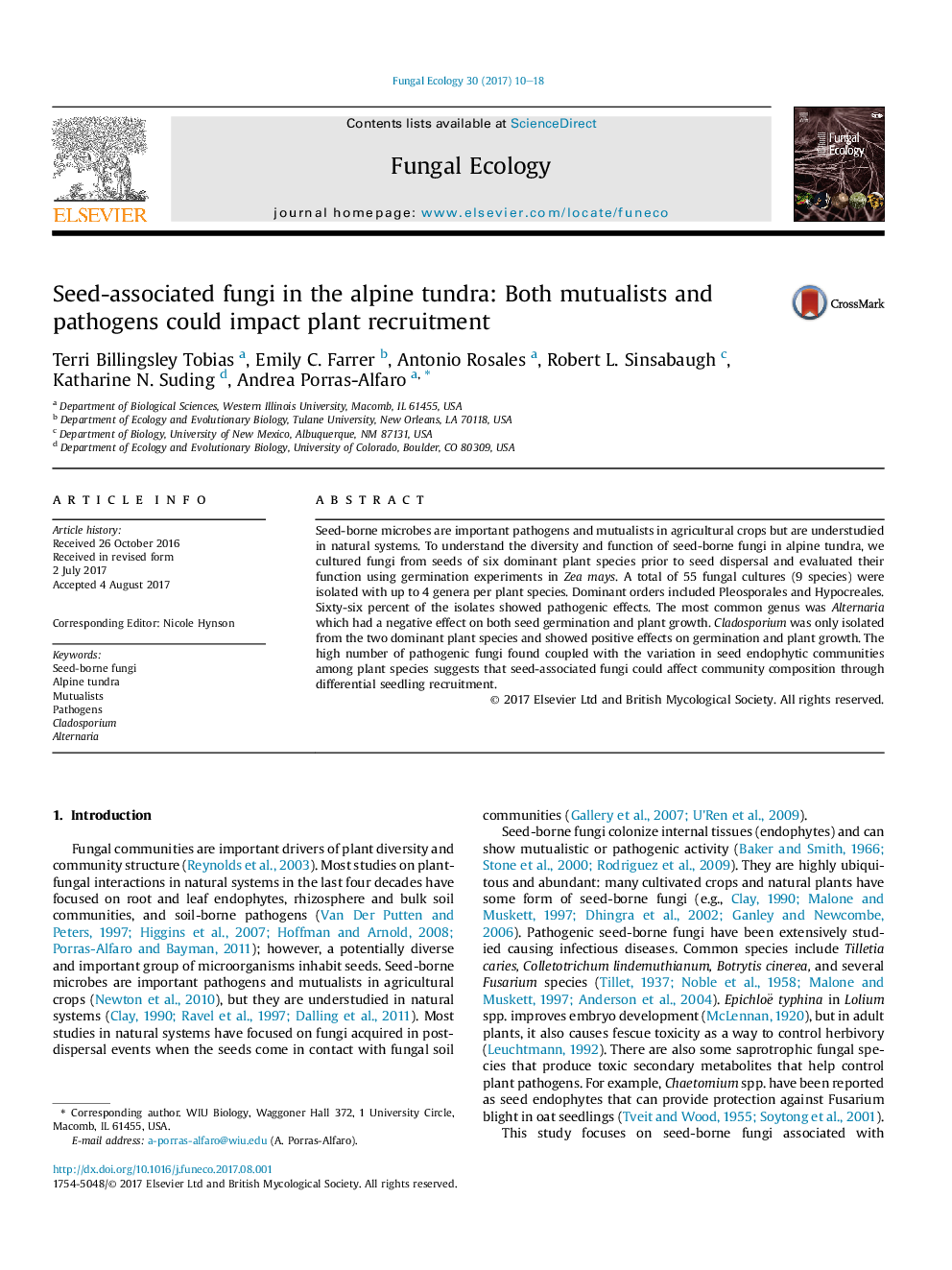| Article ID | Journal | Published Year | Pages | File Type |
|---|---|---|---|---|
| 5517584 | Fungal Ecology | 2017 | 9 Pages |
Seed-borne microbes are important pathogens and mutualists in agricultural crops but are understudied in natural systems. To understand the diversity and function of seed-borne fungi in alpine tundra, we cultured fungi from seeds of six dominant plant species prior to seed dispersal and evaluated their function using germination experiments in Zea mays. A total of 55 fungal cultures (9 species) were isolated with up to 4 genera per plant species. Dominant orders included Pleosporales and Hypocreales. Sixty-six percent of the isolates showed pathogenic effects. The most common genus was Alternaria which had a negative effect on both seed germination and plant growth. Cladosporium was only isolated from the two dominant plant species and showed positive effects on germination and plant growth. The high number of pathogenic fungi found coupled with the variation in seed endophytic communities among plant species suggests that seed-associated fungi could affect community composition through differential seedling recruitment.
